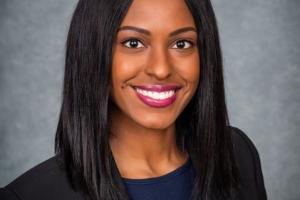
Read this Q&A with one of the participants in the summer immersion program in Myopia Management: John Mark McGuillion
What were your first impressions of Vision Optique and Dr. Jennifer Sheen? What are the benefits of her Thursday, Friday, Saturday schedule?
My first impression of Vision Optique and Dr. Jennifer Sheen was nothing short of utmost excitement. From the moment you walk in the door, it is clear that the practice is run with attention to detail and genuine care for the patient; those qualities are even more apparent in the exam room. Dr. Sheen and the other doctors at Vision Optique pride themselves on using the latest technology and practices to provide the best care available for the patient.
Dr. Sheen’s Thursday, Friday, Saturday schedule had some major benefits, especially for her patients. Having weekend appointments available allowed pediatric and myopia management patients to come in without interrupting their weekly activities such as summer camps.
How is the Lenstar Myopia biometer utilized at Vision Optique and what do conversations about axial length sound like?
Baseline axial length measurements are taken by the Lenstar Myopia biometer on all pediatric patients. Axial length measurements are monitored and compared to previous measurements to track progression of myopia. Axial length is an extremely important measure when monitoring myopia. The accuracy and precision of biometry tells us important details that can’t be gathered from refraction alone.
What new learnings at Vision Optique and University of Houston Myopia Control clinic surprised you in a good way?
I was surprised by how open to treatment parents were. Many eye care providers are hesitant to incorporate myopia management into their practice because they are worried about whether or not parents will be open to treatment options and the associated costs. But after taking the time to educate the patient and parents, it’s a no-brainer to take these extra steps to protect their child’s vision. I was also surprised by how well many pediatric patients did as first time contact lens wearers. It’s common for parents to assume that their child won’t be able to insert and remove contact lenses, but we know that’s just not true. But even after reading the literature myself and knowing that children can use contact lenses, I was surprised by how quickly and easily they learned.
What about your summer myopia management immersion will you carry forward into your second year experiences at University of Houston College of Optometry? Best practices?
I am extremely excited to begin my second year of optometry school and carry everything I’ve learned into my classes and clinical interactions. This summer experience has set me up with a unique insight and experience as I begin my courses in pediatrics, contact lenses, and ocular pharmacology and therapeutics. I was able to learn how to fit soft contact lenses and Paragon CRT before learning it in the classroom. Apart from the technical skills I learned this summer, I plan to always take with me the empathy for patients and commitment to excellence I learned from the doctors and staff at Vision Optique.
About John Mark McGuillion
John Mark McGullion is a second year student at University of Houston College of Optometry. John Mark has clinical interests in myopia management and specialty contact lenses. He currently serves as a Class Representative for the Optometric Student Association, AOA-PAC Liaison-Elect for the American Optometric Student Association, and Treasurer for the Student Optometric Finance Association. He is originally from Alabama, where he completed his undergraduate degree and started his work in eye care as a high school student. In his free time, John Mark enjoys exploring new restaurants, weightlifting, and spending time with his wife and friends.








